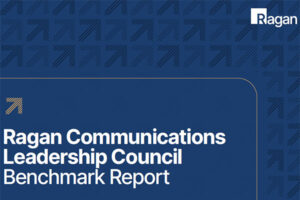Improving accessibility comms for neurodiverse audiences
Here’s how to meet unique audiences where they are.

Autism diagnoses are increasing in the United States and one in five people are considered neurodiverse.
Neurodiversity is perhaps best known to mean autism and spectrum disorders, but it can also include anxiety disorders, dyslexia and other sensory disorders and mental illnesses.
As the prevalence of neurodiverse employees rises in the workforce, so too does the importance of making content in the workplace accessible. Additionally, communicators may find themselves tasked with ensuring emails, videos and other communiqués are understandable to people with visual or auditory impairments.
[RELATED: Enhance, Advance, and Unify a DE&I Comms Strategy with Ragan’s DE&I Certificate Course]
What accommodation looks like for each individual in the workplace will differ. However, it’s up to DE&I experts and communicators to anticipate those needs with programs and resources that cater to these growing audiences.
Christina Frantom, internal communications lead at Mercedes-Benz U.S. International, spoke to Ragan about ways to help boost these comms efforts.
Get leadership approval first
Getting leadership buy-in early can ensure that proper resources are allocated for DE&I efforts so projects have a higher chance of success and visibility.
“Gone are the days where this is (considered) volunteer work by people who are trying to ‘do the right thing,’” Frantom said. “This is a business process that needs to be worked in and incorporated with and alongside all the other business processes you have.”
After securing approval, it’s critical to incorporate DE&I work companywide. That could look like inviting employees to learn more about employee resource groups, including those for people with disabilities, or intentionally bringing more neurodiverse talent in. That also might look like ensuring DE&I programming is on companywide calendars and agendas.
Another way to bolster visibility is realizing that DE&I comms should be available to everyone. Send out emails about the latest news from this space. Consider planning DE&I activities and have signage around the workplace discussing initiatives.
Frantom said that evangelizing DE&I work from the top down can help overall efforts companywide.
“One of the most tangible things you can do is set it (DE&I initiatives) as a priority,” Frantom said.
Be accessible and intentional
When creating DE&I plans, ensure that neurodiverse individuals and those with disabilities have a seat at the table when those discussions are taking place.
“You want to make sure that when you’re at a table, that when you look around that table, that there are people who are representing the community that you’re discussing or that your programs or processes or the outcome of your decisions are going to be affected,” Frantom said.
Now with representation at the proverbial table, creating comms for neurodiverse audiences and people with disabilities is a great way to build strong employee retention and trust.
That could look like using closed captions or transcripts during and after a meeting.
“You want your content to be accessible to everyone as much as possible regardless of if (they) have a visible or invisible identity,” Frantom said.
In addition to closed captioning, make sure that your metadata fields are complete when designing everything from websites to presentations to spreadsheets. That could be a content creator adding alt text. This helps someone who is visually impaired to hear the description via a screen reader. Frantom said making those extra steps “takes your content to the next level for all audiences.”
Another example could be ensuring individuals with red-green colorblindness can access your content. Frantom said that during the holiday season, many festive content creators could put out a story or message featuring those colors.
“People (who have) red and green colorblindness, they can’t read it,” Frantom said. “And so that just needs to be an awareness when creating content.”
Frantom suggested setting “editing gates,” her term for testing content for accessibility with real people. Put your content in front of individuals who occupy some of those reading or audio-impairment identities and review it with them. Talk with someone who is colorblind or dyslexic, for example. Learn what works and what doesn’t work from their perspective. But don’t just stop there.
“Making it a priority to caption and describe your video content not only makes the consumer experience more accessible, it also makes sure that you have communicated intent along with your graphics and text,” Frantom said. “Preparing your content to be read by screen readers or other assistance devices, as well as designing for red-green color blindness, for example, makes a big difference for individuals using those devices.”
Frantom said it’s important for communicators to proactively search for opportunities to appeal to their audiences instead of waiting for them to tell you their needs.
“As communicators, designers, and content creators of all types, it is our job to make sure that we are not only meeting industry standards but also exceeding expectations where marginalized audiences are concerned,” Frantom said. “Create content that is as consumable as possible, but make sure you are getting to know your audience on the granular level as well.”
Learn more about these and other relevant DE&I topics by joining us at Ragan’s Certificate Course on Jan. 17, Jan. 24 and Jan. 31.
Sherri Kolade is a writer and conference producer at Ragan Communications. She enjoys watching old films, reading and building an authentically curated life. Follow her on LinkedIn. Message her if you have a great PR/comms speaker in mind for a Ragan event.








Good article.